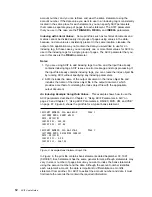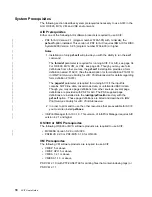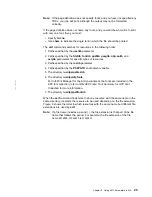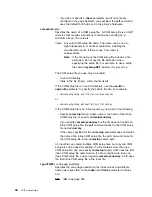
When the acif command processes any unrecognized or unsupported
parameter, acif issues a message, ignores the parameter, and continues
processing any remaining parameters. The acif command then stops
processing.
Though the parameters themselves are not case-sensitive, associated values,
such as file names, attribute names, and directory names
are case-sensitive.
For example,
formdef=F1MINE
is
not the same as
formdef=f1mine
Be sure to specify these values in the case in which they exist in the file
system (for external resources) or in the print file (for inline resources).
If the same parameter is specified more than one time, the acif command uses
the last value specified. For example, if you specify the following:
pagedef=P1MINE
pagedef=P1YOURS
the acif command uses page definition P1YOURS only.
Description
The acif command transforms S/370 line data, mixed-mode data, and unformatted
ASCII files into the Mixed Object: Document Content Architecture for Presentation
(MO:DCA-P) data stream. With this data stream, you can do the following:
Print the file on a printer defined to PSF for AIX, or to other PSF products
View the file using a viewer product such as AFP Workbench
Archive and retrieve the file using your own archival management system
The acif command provides indexing and resource retrieval capabilities, which
enable you to perform the viewing, archiving, and retrieving tasks with the
appropriate system and software.
Three types of files can be generated, depending on what output options you
specify:
An AFP document file
An AFP resource file
An index object file
When you use the acif command to convert S/370 line data or unformatted ASCII
data, you must specify a page definition ( pagedef parameter). If the page
definition names some fonts, the acif command uses those fonts. If the page
definition does not name any fonts (like the sample page definitions supplied with
PSF for AIX), and if you want the file to print with more than one font, then the
input file must contain table reference characters, and you must:
Specify trc=yes.
Use chars to indicate the fonts to be associated with each Table Reference
Character (TRC).
fontname1 is associated with TRC 0, fontname2 is associated
with TRC 1, and so on.
24
ACIF User’s Guide
Summary of Contents for S544-5285-01
Page 1: ...IBM Print Services Facility IBM AFP Conversion and Indexing Facility User s Guide S544 5285 01...
Page 2: ......
Page 3: ...IBM Print Services Facility IBM AFP Conversion and Indexing Facility User s Guide S544 5285 01...
Page 10: ...viii ACIF User s Guide...
Page 22: ...2 ACIF User s Guide...
Page 40: ...20 ACIF User s Guide...
Page 41: ...Part 2 Using ACIF in the AIX Environment Copyright IBM Corp 1993 1999 21...
Page 42: ...22 ACIF User s Guide...
Page 72: ...52 ACIF User s Guide...
Page 96: ...76 ACIF User s Guide...
Page 99: ...Part 3 Using ACIF in the OS 390 MVS VM and VSE Environments Copyright IBM Corp 1993 1999 79...
Page 100: ...80 ACIF User s Guide...
Page 106: ...86 ACIF User s Guide...
Page 134: ...Figure 24 Example of a Customer s Phone Bill 114 ACIF User s Guide...
Page 142: ...122 ACIF User s Guide...
Page 196: ...176 ACIF User s Guide...
Page 197: ...Part 4 Appendixes Copyright IBM Corp 1993 1999 177...
Page 198: ...178 ACIF User s Guide...
Page 206: ...186 ACIF User s Guide...
Page 210: ...190 ACIF User s Guide...
Page 226: ...206 ACIF User s Guide...
Page 253: ......
















































